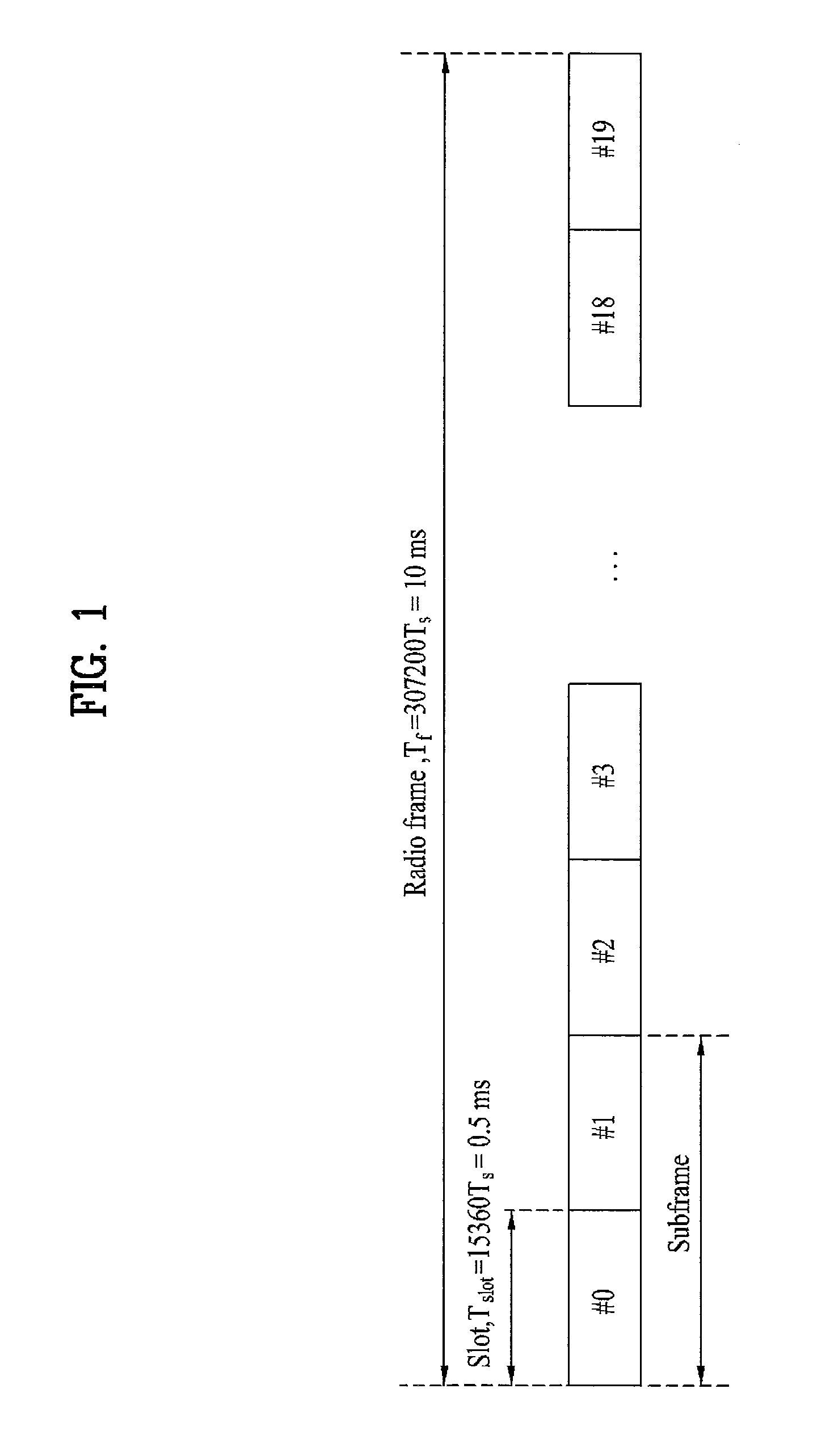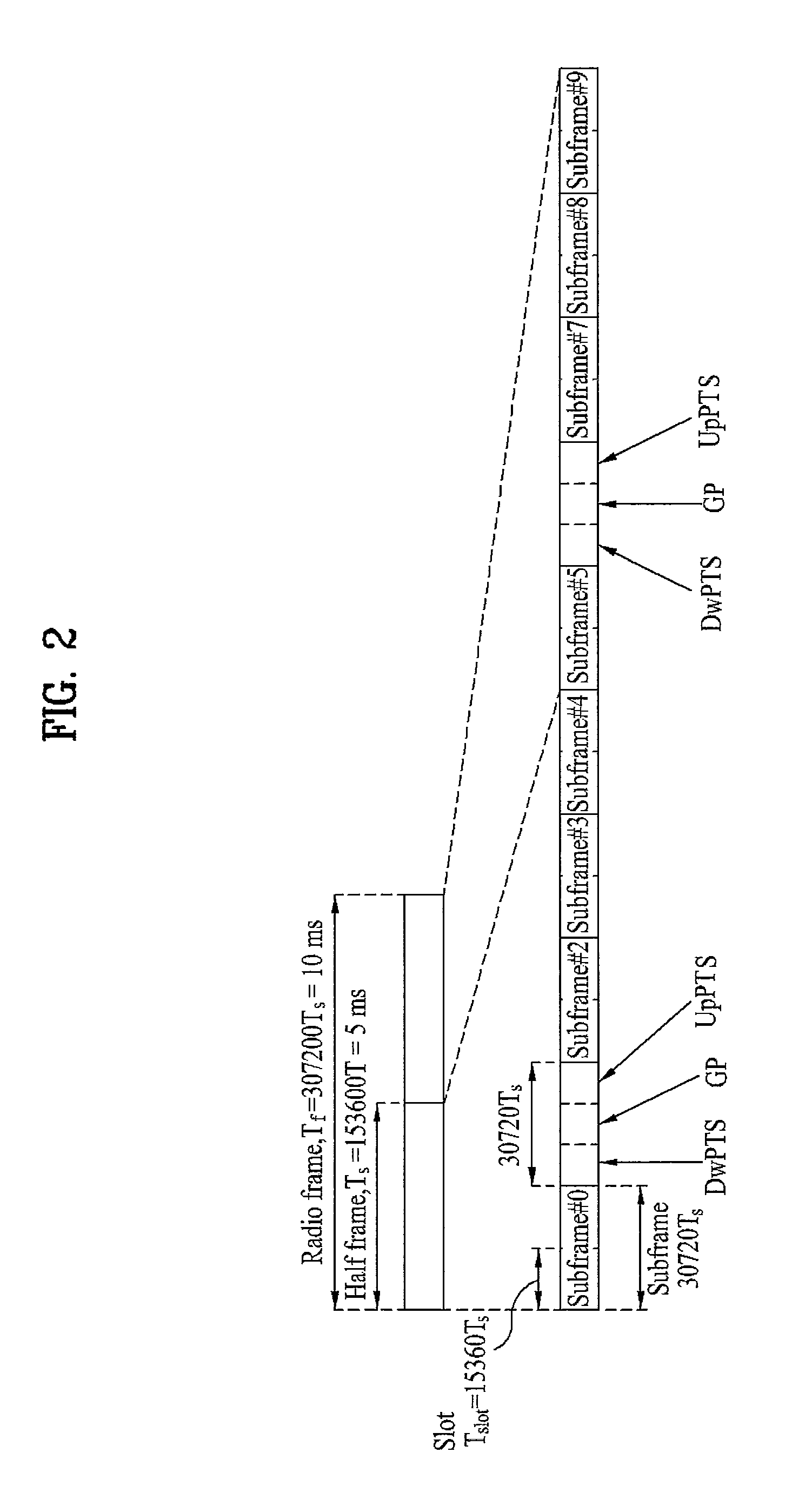Method and apparatus for indicating deactivation of semi-persistent scheduling
a technology of semi-persistent scheduling and signaling, applied in the field of semi-persistent scheduling of radio resources, can solve the problem of considerable signaling overhead
- Summary
- Abstract
- Description
- Claims
- Application Information
AI Technical Summary
Benefits of technology
Problems solved by technology
Method used
Image
Examples
embodiment 1
[0189]A method and apparatus for allowing the UE 50 shown in FIG. 20 to perform SPS deactivation according to a first embodiment of the present invention will hereinafter be described in detail.
[0190]The first embodiment of the present invention relates to a method and apparatus for deactivating semi-persistent scheduling (SPS) by the UE 50 of FIG. 20. The processor 51 contained in the UE 50 receives a downlink control channel from a base station (BS) through the RF unit 53. If the binary field indicating resource allocation information contained in the downlink control channel is entirely filled with ‘1’, the processor 51 deactivates the SPS.
embodiment 2
[0191]A method and apparatus for allowing the base station (BS) 50 shown in FIG. 20 to transmit a signal for SPS deactivation according to a second embodiment of the present invention will hereinafter be described in detail.
[0192]The second embodiment of the present invention relates to a method and apparatus for transmitting a signal for SPS deactivation by the base station (BS) 50 shown in FIG. 20. When performing the SPS deactivation, the processor 51 of the base station (BS) 50 fills the entire binary field indicating resource allocation information contained in a downlink control channel with the value of ‘1’. Thereafter, the processor 51 transmits the downlink control channel through the RF unit 53. In this case, the binary field filled with the value of ‘1’ indicates SPS deactivation.
[0193]It is apparent to those skilled in the art that the first embodiment (Embodiment 1) and the second embodiment (Embodiment 2) can be reconstructed as a method invention embodied by a combina...
embodiment 3
[0194]FIG. 21 is a flowchart illustrating a method for deactivating a semi-persistent scheduling (SPS) according to the present invention.
[0195]In order to perform SPS deactivation, a base station (BS) fills the entire binary field indicating resource allocation information contained in a downlink control channel with the value of ‘1’ at step S2101. The base station (BS) transmits the downlink control channel to the UE at step S2102. The UE receives the downlink control channel from the base station (BS) at step S2103. When the entire binary field indicating resource allocation information contained in the downlink control channel is filled with ‘1’, the UE performs the SPS deactivation.
[0196]The first to third embodiments (Embodiment 1˜Embodiment 3) can be restricted as follows. The downlink control channel may be a PDCCH, and a Downlink Control Information (DCI) format of the downlink control channel may be a ‘Format 0’ or a ‘Format 1A’. The wireless mobile communication system us...
PUM
 Login to View More
Login to View More Abstract
Description
Claims
Application Information
 Login to View More
Login to View More - R&D
- Intellectual Property
- Life Sciences
- Materials
- Tech Scout
- Unparalleled Data Quality
- Higher Quality Content
- 60% Fewer Hallucinations
Browse by: Latest US Patents, China's latest patents, Technical Efficacy Thesaurus, Application Domain, Technology Topic, Popular Technical Reports.
© 2025 PatSnap. All rights reserved.Legal|Privacy policy|Modern Slavery Act Transparency Statement|Sitemap|About US| Contact US: help@patsnap.com



